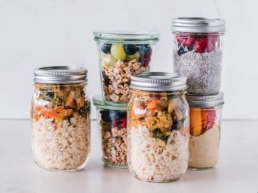By Jenny Fowler, First Mile Care Coach
Three Areas to Practice Greater Awareness
When patients are prescribed the diabetes prevention program (DPP), they often mistakenly think they’re being put on a diet. Most people hear the word “diet” and immediately shut down. Diets frequently summon negative thoughts: “punishment,” “deprivation,” “tried before,” “failed,” “didn’t work for me,” or even “why bother?”
Well, good news! The Diabetes Prevention Program is not a diet. DPP is a commitment to small, incremental lifestyle changes that can ultimately reverse a prediabetic state. You don’t have to develop type 2 diabetes, and DPP is an evidence-backed methodology to restore healthy metabolic function in your body and achieve “food enlightenment.” It all starts with greater awareness of…
Your Own habits
Identifying triggers is an essential part of putting together a sustainable food program. Trigger examples include stress, lack of sleep, your exercise routine, missing nutrients, and a variety of other factors. These can contribute to how, when, and why you eat certain foods and how they make you feel. Often we resort to making undesirable food choices because of lack of planning or stress. By intentionally mapping out your day or even your week, you will become better equipped to handle some of the factors that create unhealthy habits. For example, if you know that your work schedule is often unpredictable, leaving you with little time for cooking or a reliance on heavily processed meals, try meal prepping.
Meal prepping does not require chef-level skills or hours of kitchen labor, but allowing yourself to take advantage of nutritious pre-chopped veggies or pre-cooked proteins can make a huge difference when you’ve had a long and stressful day. Be realistic about what you have time for. Eating healthy doesn’t mean that everything has to be made from scratch in your home!
Cutting corners can help eliminate unhealthy choices and is absolutely okay, and in fact, encouraged in DPP. Be realistic about what you have time for and what may be causing you additional stress. Putting a helpful structure in place and planning ahead can almost always ward off a trip through the drive-thru.
How You Feel
There is no such thing as a one-size-fits-all meal plan. What works for some will not work for everyone. This is where your own personal power of observation becomes incredibly important. Mindlessly tracking what you eat and logging it into an app or food journal is pointless on its own. In the Diabetes Prevention Program, you can try tracking your food to observe correlations that might exist between how you feel and certain foods, quantities, or times you may have eaten. For example, if you tend to not feel well on Tuesday evenings, maybe there’s an element of your taco Tuesday tradition that’s not working for your body. Be aware of when you don’t feel well and think back to what the source may be. Identify patterns in your behavior that could be contributing to your lack of well-being.
There’s no substitute for investigating your own habits and your body’s response. The best method for determining your optimal diet is through observation — personal trial and error. Ask yourself – is my food doing all it can for me? Does my food serve as the proper fuel I need for my day? And do I feel well?
What’s in Your Food
Unfortunately, much of how we consume comes from our attraction to packaging or marketing language and advertising. And even if we dig deeper, most people only flip over the package to check the calories. BUT, calories are not the only thing you should take into consideration when purchasing food. In fact, low-fat or reduced-fat and fat-free items can often have more sugar in them. And it is important to understand that sugar is not synonymous with sweet.
There are many items – ones you may associate with the savory spectrum – that are loaded with sugar. Fat helps you feel satiated and provides flavor in most foods, so when removing fat from processed items, sugar (and sodium) are often increased to fill the taste gap. Be mindful of what makes up the low-fat foods you do purchase. The American Heart Association recommends 25g of sugar or less per day for women and 37g for men. You may be surprised to know that close to that amount (or more) can be found in your morning yogurt.
Beyond sugar, it’s important to be aware of the recommended serving size and other elements such as sodium and fiber. In the Diabetes Prevention Program, you can form the habit of checking nutrition labels for the actual serving sizes. It is easy to accidentally eat large portions in prepackaged foods. Find out what’s really inside your food by checking the recommended amounts of nutrient intake per day per portion. There’s often more than one portion in the package.
Moral of the DPP Story?
DPP is not about the latest fad diet, protein powder, or Instagram-famous supplements. It’s about becoming more aware of the foods you eat and what they do for you. It’s developing the presence of mind to be honest about what works for you and how that fits into your life. The purpose of DPP is to set you up for “food enlightenment” success and trigger greater self-awareness in every part of your day.



